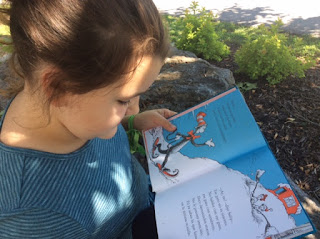Elementary and Middle School Spanish News - April and May
It
is a joy to see students choosing Spanish books to read in their own time!
Lower
Elementary students have been busy! Students wrote sentences using the verb ir - to go. Using the globe, student
We
also are describing pictures using the verb estar
- to be. For example: Los niños están corriendo - the
boys are running.
We
are using vocabulary to discuss animals and their habitats. Students name continents and animals, and then
we play games where students ask and answer questions about animals in their
habitats.
¿Dónde está el gorila? - Where is the gorilla? El gorila está en Africa. – The gorilla is in Africa.
Every
other year Lower Elementary students make a piñata. This year students made
their own BEE piñata!
We
start each lesson with a mingling warm-up where students ask each other
questions. The idea is for the students to begin speaking Spanish naturally and
find out more about each other in the process.
This time of the year we work with many conversation activities.
Recently
Upper Elementary students have been working with diptongos - words that
have two vowels together in one syllable. We
looked for words with diptongos in the dictionary to gain familiarity using the
Spanish /English dictionary. They use the words they find to write sentences.
Students
then wrote stories, and some students choose to write their own play. One group
even wrote songs.
Middle
School students are continuing to study indirect object pronouns and Spanish
gender agreement. This year they have being working with many grammar
activities. It’s always nice to see how the students help each other. ¡ Buen
trabajo!














Comments
Post a Comment